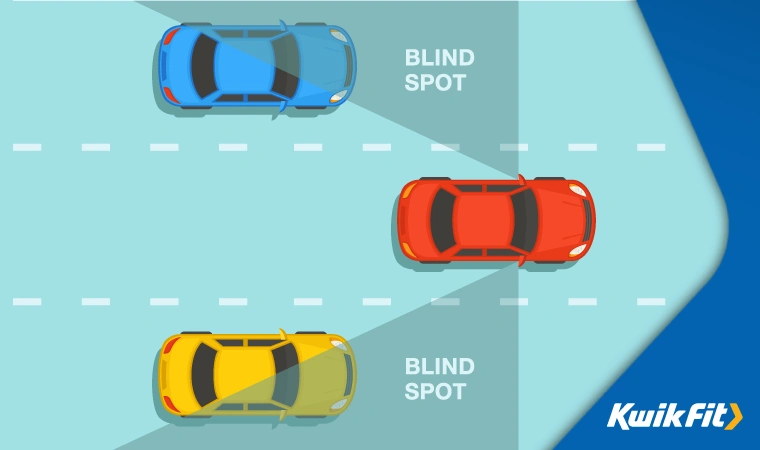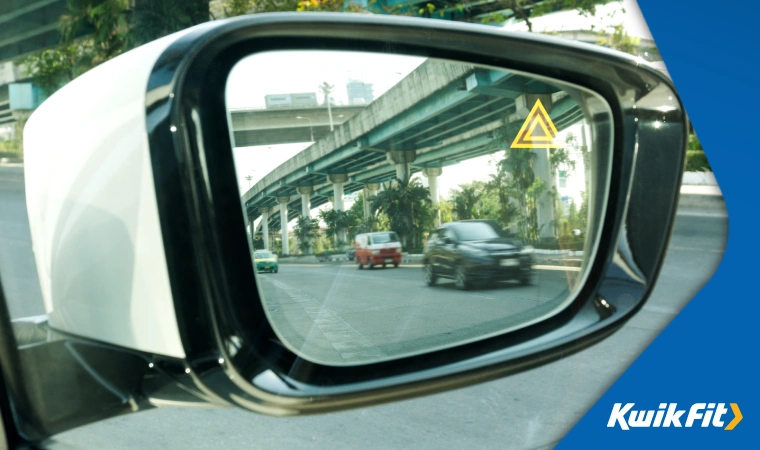Where Are The Common Blind Spots For Different Vehicles?
Jack Dreyer | Monday 17th October 2022 8:00am

When first learning to drive, we are taught about the importance of checking our mirrors before making any kind of manoeuvre. We also learn about the dangers that come with blind spots. For many of us, it may well have been years since we last learnt about these hazards. So, let’s refresh our memories, shall we?
Every vehicle has its own unique set of blind spots and it’s essential to familiarise yourself with those on your vehicle before driving it and learn how to mitigate blind spots. Read on to find out more.
What is a blind spot?
A blind spot refers to an area of the road that is obstructed or just out of the driver’s sight. Blind spots — as the name implies — are patches that cannot be seen by looking through the windscreen or through the use of side-view or rear-view mirrors. They cause drivers to have to physically turn their heads to look where their mirrors are unable to reach.
Drivers are not able to see any hazards that may be lurking in those blind spots — and you’d be surprised what they are capable of concealing. Anything from cyclists and motorbikes to other cars and even lorries can be blocked by a blind spot.
As such, blind spots (and driver inability to check them) are responsible for thousands of accidents on the UK’s roads each year. In order to do your part to bring this number down, it is wise to know exactly where the blind spots on your vehicle are so that you can pay them greater attention and are more likely to see the hidden cyclist or car.
Where are the common blind spots?

As we’ve said, every vehicle is designed slightly differently, but there are common places that usually act as blind spots in cars, vans, and lorries. It’s worth pointing out here that these blind spots aren’t designed into the car on purpose, they’re the result of design decisions that have to account for the vehicle’s structural integrity.
Blind spots in cars
On average a car has two main blind spots. These are generally on the back left and the back right side of the car. These are the areas where the driver cannot see clearly by using their mirrors.
General car blind spots
Let’s say you are driving along and a car overtakes you. At first, you can see it in your rear-view mirror. Then, it pulls out and begins to come alongside you. At this point, you won’t be able to see it in the rearview but may catch a glimpse of it in the side view mirror. After a certain point, there may be a moment when you can see it in neither.
This is called your blind spot and is why it is so important to keep an awareness of other road vehicles with you at all times as they can fall out of view. If you had failed to check your mirrors before this moment and started to pull out into the outside lane, you may well have caused a collision.
The A-pillar blind spot
But there is another significant blind spot in cars: the A-pillar blind spot. This area of road is blocked out unintentionally by the vehicle’s design and, therefore, is worse in some vehicles than others. The A-pillar refers to the material on either side of the windscreen that joins the roof material.
When creeping out of junctions or at roundabouts, this blind spot can obscure a lot and may cause a crash if drivers do not give it the attention it deserves.
Blind spots in other vehicles
While you have a handful of blind spots in your vehicle, it is worth remembering that at any given time on the road, you may well be in someone else’s blind spot. This is especially true when it comes to larger goods vehicles or lorries in transit.
When driving near larger vehicles, be smart about the placement of your vehicle. Lorries, buses and coaches have blind spots that are much larger than regular cars due to their length. In fact, you may have seen stickers on the backs of lorries saying ‘You’re in my blind spot’ to help keep car drivers safe.
The blind spots on larger vehicles are also at the rear in the left, right, and middle as their mirrors simply cannot view back this far. So, keep well back when travelling behind a lorry. When overtaking too, try to do so quickly and without getting too close.
How to deal with blind spots

So, now we’ve learnt where the blind spots are in vehicles. What can be done about them? Well, depending on the design of your vehicle and its mirrors, it may not be entirely possible to eliminate blind spots completely. However, there are numerous ways you can reduce them.
1. Adjust Your Mirrors
When you’re sat in the driver’s seat, be sure to correctly position your mirrors to give you maximum visibility of what’s around the car.
- Move the rear-view mirror until you can see as much of the road as possible behind your car. Make these adjustments while keeping your head in the usual driving position.
- Adjust the two wing mirrors so that you can see as much of the environment by the sides of the car as possible. When sitting upright, you should not be able to see any of your own vehicle’s bodywork in these mirrors as that would be wasted space.
How to install blind spot mirrors
As an extra precaution, you may also want to install something known as a ‘blind spot mirror’. These are often used by learner drivers or those who need a little extra help getting to grips with the spatial awareness of their vehicles on the road.
You may well have seen them or have them fitted on your car if purchased second-hand. They are the little circular mirrors on the wing mirrors and are excellent for helping with reversing and other tricky manoeuvres too.
You can install them using the following steps:
- Peel off the back section of the blind spot mirror to reveal a sticky spot.
- Make sure the surface of your wing mirrors is dry before attempting to apply the blind spot mirrors or they won’t stick.
- One at a time, press the blind spot mirror sticky side down on the bottom corner (furthest away from the car’s body) of your wing mirrors.
- Check they are stuck down properly and you’re good to go.
Position-wise, these mirrors should only show a very small section of your body work, giving you the best possible view of the road behind you.
2. Be careful at junctions
Another way to combat the problems caused by blindspots is to take extra care when pulling out. The A-pillar blind spot can be lethal when you are emerging from junctions. Take great care to check all around you before changing lanes when approaching things like roundabouts too.
Over time, you may learn how long it takes for a vehicle to ‘hide’ in your blind spot for.
3. Look over your shoulder
For the blind spots at the rear of your car, you can cover yourself by casting a cautionary glance backwards while driving. Looking over your left shoulder while reversing is always a good idea. However, don’t look for longer than a second or two as your eyes should remain on the road and your hand should stay firmly on the steering wheel.

Speak to Kwik Fit today
Blind spots are just one of the many hazards that you can come across when driving. If you’re concerned about the safety of your vehicle in other areas (such as tyres, brakes or suspension), get in touch with your local Kwik Fit today or book in for a free vehicle safety check to put your mind at ease. Stay safe out there!
Any facts, figures and prices shown in our blog articles are correct at time of publication.
Featured Articles
Is it Illegal to Drive With One Headlight?
Saturday 19th July 2025
Wondering if it’s illegal to drive with one headlight? Learn about the safety risks and penalties of illegal blown bulbs and why you should fix them promptly.
Air Con in EVs & Hybrids: Experts Answer Your Questions
Monday 30th June 2025
Does air con drain EV batteries? Can you use the air con while charging an electric car? Find out the answers to these questions & more from Kwik Fit’s experts.
Why Is Your Car Making a Noise? Fixes & Tips
Friday 13th June 2025
When your car starts making unexpected noises, it can certainly be quite disconcerting; it may be nothing to worry about, but here’s what you need to know.









